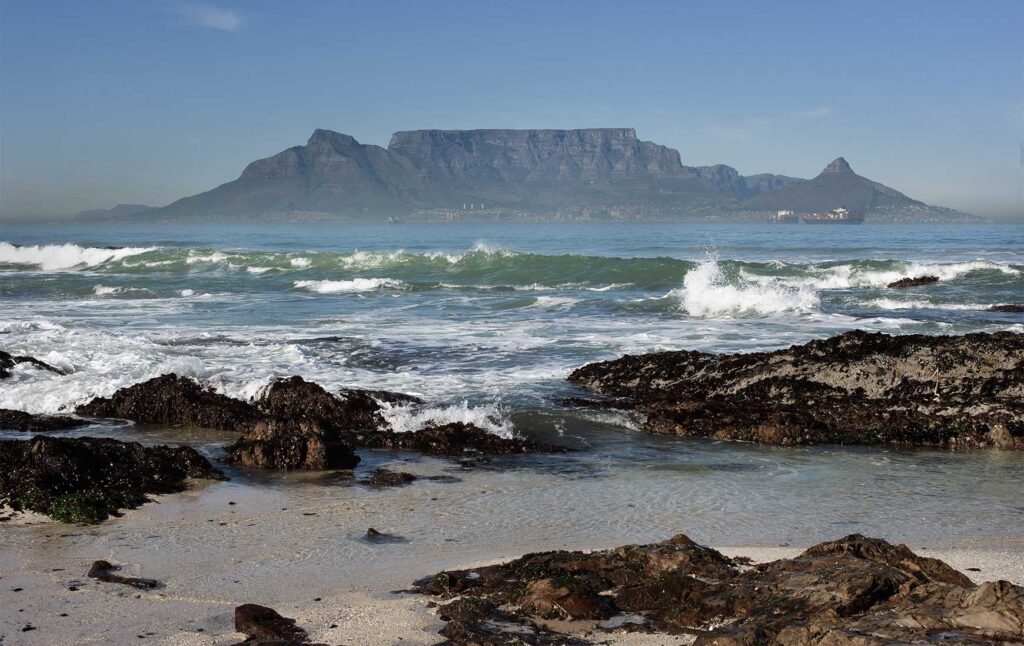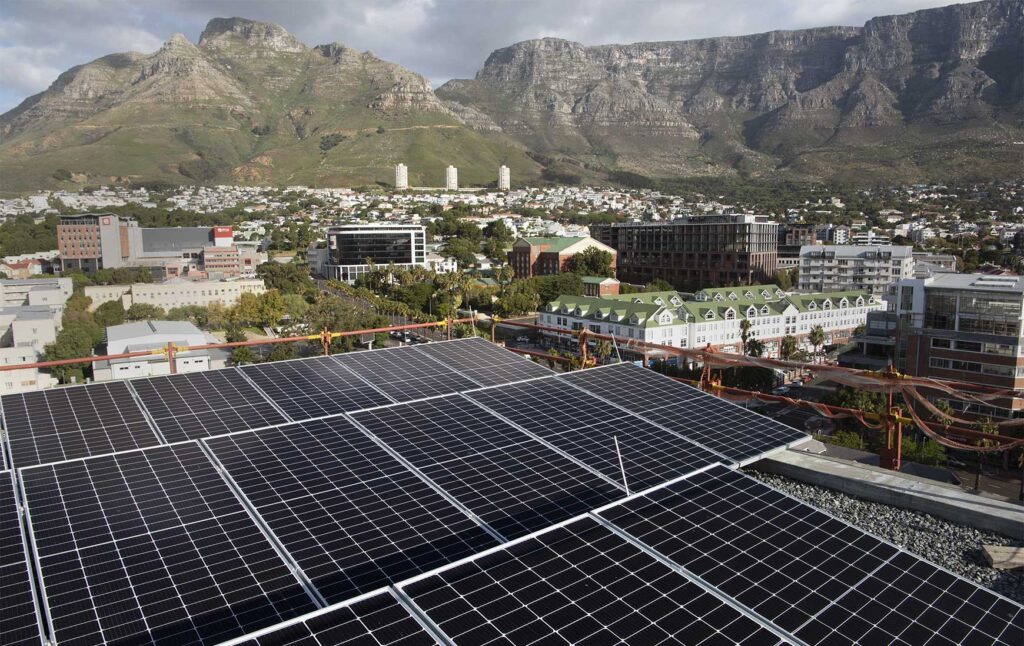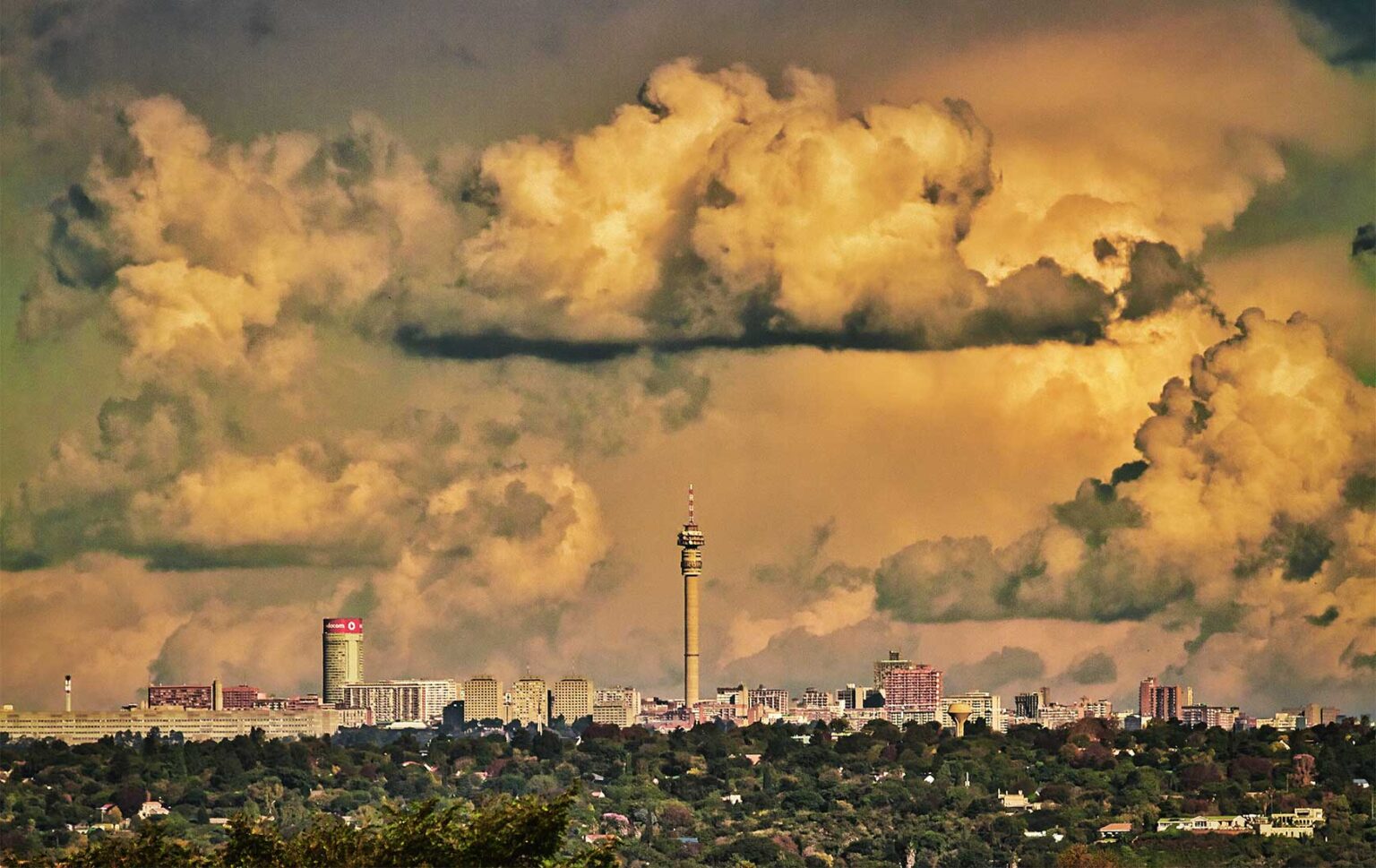First, it was a generation lost to countries abroad. Now the ongoing exodus of affluent white families from Johannesburg to Cape Town has drawn new, unprecedented spatial and political battle lines at local government level that mirror apartheid in all but name.
Summer comes to Johannesburg in October. In the early evenings, storm clouds, dark and gravid, crackle and burst in heavy downpours that water the rivers and parched trees, which give the city’s well-heeled suburbs their eerie beauty. By late October 2023, water was desperately needed for something else, quite new, not only to lubricate the naked, dry landscape but for all the necessities of life. Ailing water and electricity infrastructure, incompetence, and corruption in the public sector conspired to produce a perfect storm that made life simply unbearable. Johannesburg was aquiver.

Apart from affluent whites who fled the chaos of the Zuma presidency for the security and safety of developed economies abroad, no other city has, like a staged theatrical reenactment of the Great Trek, ever emptied out such large numbers of skills and capital. It is called, colloquially, “semigration”; but the word is scarcely adequate. If the electricity crisis produced an older generation lost to countries abroad, by the time of the Covid-19 pandemic in 2020–21, the ground shifting beneath Johannesburg’s sclerotic economy was producing a generation of affluent semigrants—quietly at first, later gathering momentum—who have been abandoning their homes for the ambience of Cape Town.
In the absence of official census data, the sheer scale of the phenomenon is hard to tell. But there are hints. One early clue was a survey in January 2022 by analytics group Lightstone Properties. The data revealed that each year since the 2016 local elections, quite literally thousands of Johannesburg residents, lured by the sequestered luxury, comfort and security of Cape Town, left the city. Real estate trends from Lightstone on homeowners moving out of Johannesburg show an increase from 36% in 2016 and 2017 to 39% in 2019 and 2020 and 43% in 2021.

To put that in perspective, perhaps no other area starkly emblemises the suddenness and magnitude of the stony and tortuous path since the 2016 local elections as Houghton. Outwardly, Houghton has been a patrician enclave of historically white privilege. Large Edwardian-style mansions, replete with tall gabled columns at their entrances behind heavily fortified walls, reveal the decorative pastiche of the New English architecture associated with Herbert Baker, dropped, as though by accident, into a rugged cityscape during the 1930s.
But beneath the veil, another reality cuts through the heart of present-day Houghton like a clumsily retouched image: the appearance of the place fades out of the real South African story, but its grim shadow remains in what the urban planner Martin Murray has described as an “aesthetic anarchy”, where privatised urbanism that once sustained a self-sufficient playground of the filthy rich and upper middle classes is faltering in the face of unsustainable power and water shortages and radically altering Johannesburg’s social, economic and political landscape. On every street, for-sale signs line manicured lawns; lights are often out; large festering swimming pools lie half empty; and potholes circled in paint are labelled ANC, a swipe at the African National Congress (ANC), which presides over an R81 billion metropolitan budget and six million people who call Johannesburg home.
Predictably, the ANC-led metropolitan council has downplayed the crisis, claiming that there is nothing like a quiet exodus underway. Since the COVID-19 pandemic, the city council’s strongest impulse has been to sit back. No longer capable, as journalist Patrick Bulger has written, “of settling into a comfort zone decorated in the shades of the inequality inherited from the past”, the ANC at local level has had to surrender to the frustrations, disappointment and anger of the urban poor and black middle class in the face of strong support for the official opposition, the Democratic Alliance (DA) among the city’s white upper and middle classes.

And so it’s also safe to assume that caution by the ruling ANC in the city speaks to another side of the story: the ongoing exodus of affluent white families from Johannesburg to Cape Town has drawn new spatial and political battle lines at local government level between the DA, on the one side, and the ANC and Economic Freedom Fighters (EFF), on the other, who would like nothing more than to rid the city of DA support.
This is not a hyperbolic repartee. In a recent study of urbanisation in Johannesburg, sociologist Owen Crankshaw found that the racial composition of the Johannesburg region has undergone a radical transformation over the past four decades. About 40 % of the population of the city was white when the National Party rose to power in 1948 and most of the remainder was African. Since then, the African population has grown steadily in both relative and absolute terms. By 1996 the proportion of white residents had dropped to one-fifth of the population. Correspondingly, the African population grew steadily so that by 1996, African residents made up 71% of the population. By the end of the COVID-19 pandemic in 2021, wealthy DA strongholds in Johannesburg like Houghton had quite a different demographic profile. These days its capsular architecture of enclosure fortifies a new type of local resident: black households, whose traditional loyalties have been to the ANC and, more recently, the EFF, are buying up properties vacated by wealthy white families in fire sales.
Although the picture emerging is not quite clear enough to draw definitive conclusions, perhaps the deeper implication of the meshing of these issues serves as an allegory for a massive fallout in local politics, thus raising a more animating question: in what way is the shifting demographic landscape recasting party support in two of the country’s largest metros? Addressing this question requires an exploration of the two endpoints along an emerging north-south divide in the country’s spatial and demographic profile that will have large implications for the shape and form of party loyalties at local and provincial government levels.
During and after the 2016 local government elections, there was a growing sense nationally that the perpetuity of the ANC’s electoral dominance and hegemony was declining. In Johannesburg – the heart of South Africa’s economy and a municipality that the ANC dominated for years – the ANC had only 44.5% of the vote and, consequently, no outright majority. This decline meant that larger opposition parties, such as the EFF and the DA, had to form coalitions with smaller or opposing parties to form majority governments. Since the 2021 local elections, however, contestation for the city began to coalesce around the emerging dynamic of a declining DA support base, due partly to semigration, and closer ties between the ANC and EFF that is a harbinger of things to come. Nowhere is this local political dynamic more apparent than from the ANC’s Gauteng premier Panyaza Lesufi’s informal alliance with the EFF in Johannesburg, a crucial voting pool for the ANC in the city and one it stands to lose if delivery in the city is not improved.
Put broadly, the changing demographic profile and political architecture of local contestation is not simply a matter of fragmentation within the Johannesburg metropolitan region between wealthy elites in spatial enclaves backing the DA, on one side, and ramshackle black townships and blighted ghettoes on the urban fringes behind the ANC and EFF on the other. Perhaps the deeper truth is that race has always been mapped onto party support bases. The difference since the 2016 and 2021 local elections, when the ANC lost its outright majority in Johannesburg and other major metros, is that the decline in its share of votes due to poor performance is likely to be offset by the movement of the DA’s natural constituency to Cape Town. What was once a polynucleated spatial and political configuration within Johannesburg is being recontoured across an old geopolitical fault line that once divided the English in the Cape and Afrikaners in the Transvaal before the 1910 Act of Union.

Correspondingly, by history and demography, the ANC in the Western Cape, and the Cape Town metro specifically, faces tougher challenges than anywhere else in the country as wealthy whites flock to the city. In all other provinces, black Africans constitute the majority of voters. According to political analyst Keith Gotschalk, although all major South African parties commit to a vision of a non-racial society, it is estimated that less than 2% of white voters vote for the ANC, and less than 6% of African voters vote for the DA. Put broadly, for white households historically barricaded behind wealthy DA strongholds in Johannesburg, there is now a larger displacement of local boundaries into unchartered territory: no longer capable of falling back on privatised urbanism, affluent whites are now seeking to reestablish a political bulwark of power hierarchies, wealth and status in Cape Town against the ANC and the spectre of an EFF-led coalition in Johannesburg.
And that’s the all-important point. Since the end of apartheid, there has been increasing pressure to attain the macro and micro spatial structure most suited to social cohesion and inclusive growth. However, trends such as these upset conventional interpretations of South African society that have tended to emphasise the rise of intra-racial inequality over inter-racial inequality as a post-apartheid phenomenon. Indeed, the geopolitical cleavage between Johannesburg and Cape Town suggests that the evolution of local government in South Africa from a deeply divided, fragmented, and skewed system rooted in the former apartheid dispensation may be regressing back to apartheid in all but name. What was “separate development” under apartheid is now increasingly synonymous with the re-racialisation of local politics between Cape Town and Johannesburg. The unevenness in the distribution of wealth between Cape Town and Johannesburg is no more apparent than from Crankshaw’s finding that “wealth” is socially located amongst whites (1% of households below the poverty line), and “poverty” remains concentrated amongst blacks (60.7% of households below the poverty line).
Whilst this was intended under apartheid, it appears to be resurfacing in local government, albeit in a slightly different guise. Although it is too soon to draw a line in the sand, what does seem clear enough is that the current semigration trajectory is socially locating uneven development by remapping intra-racial inequality and settlement patterns within cities onto an emerging local government divide between cities.
What does this mean for future party political contestation? For one thing, the reversal of the post-apartheid trend towards intra-racial social inequality designates a new apartheid inscribed in white (and coloured) voter support for the DA in Cape Town (and the Western Cape) and the ANC and black opposition parties in Johannesburg. In a broader sense, then, what matters is not whether the total share across all municipalities of the DA’s local vote is thinly spread and stagnant, but the consolidation of that voting constituency behind the party in the Western Cape due to semigration and its corresponding abandonment of Johannesburg to the ANC and black opposition parties like the EFF. This re-embedding of racial segregation in the spatial fabric of local government has large implications for future power configurations and coalition arrangements: rather than a deracialisation of local government, the localisation of race is an emerging reality in Johannesburg and Cape Town.
The makeover is dramatic enough to have prompted a small but significant number of researchers to call into question the long-term political implications of the evolution of the entire local government landscape over the previous two-plus decades. Besides showing the magnitude of the economic crisis in Johannesburg, semigration has revealed a hidden political dynamic: a sense that it prefigures a kind of nervous disorder and radical reordering of local politics—a sense, in other words, that the movement of wealthy people out of Johannesburg to Cape Town will slowly but surely coalesce around an emerging local and provincial political, social and spatial order of new place-making and boundary-marking, and thus an entirely new form of separation and fragmentation splintered more broadly between local governments to the north and south of the Karoo.

Malcolm Ray is a research consultant and author of two scholarly books, titled Free Fall: Why South African Universities are in a Race against Time and The Tyranny of Growth: Why Capitalism has Triumphed in the West and Failed in Africa. Malcolm’s subject speciality is economic history. His writing deals directly with themes of power hierarchies, race and gender discrimination, and class inequality. His current work focuses on the shifting dynamics of urban livelihoods, economic growth and power relations that allow for the development of theorisations of the economy and polity more relevant to post-colonial contexts. Malcolm began his career as an anti-apartheid activist during the 1980s and early 90s. He practised journalism for more than a decade before becoming a financial magazine editor in the early 2000s. He was a Senior Fellow in the Faculty of Humanities at the University of Johannesburg and editor of four premier South African and pan-African business and finance magazines.



